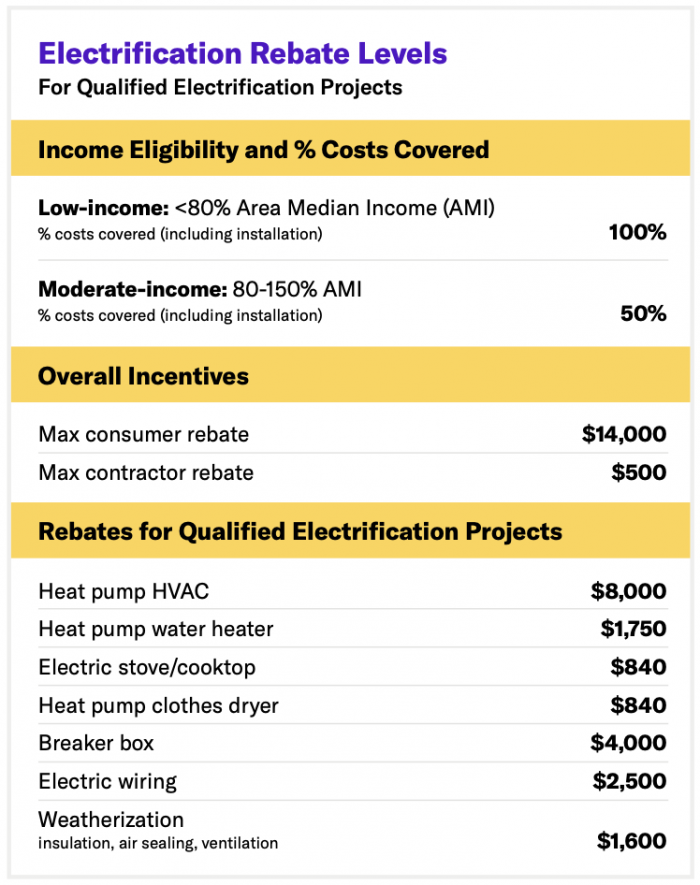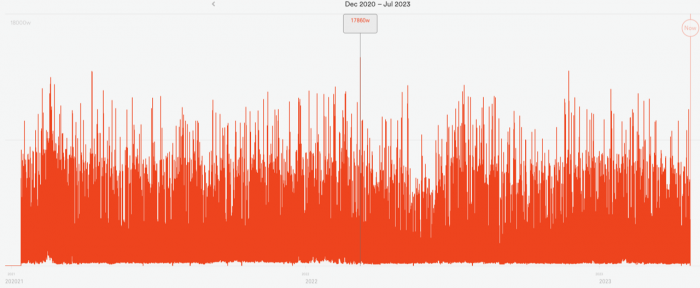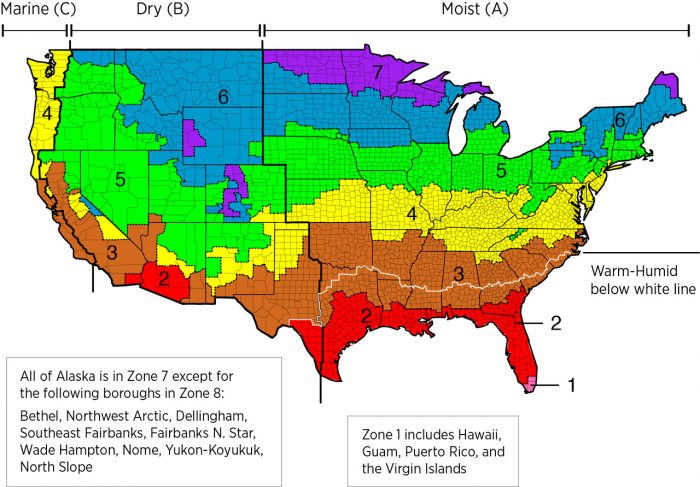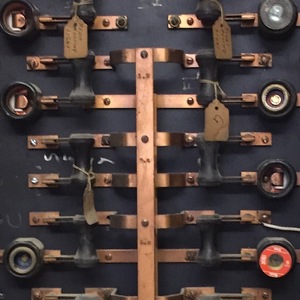
As electrification takes off there seems to be quite a bit of misinformation flying around. I’ve seen it at conferences, in blogs posts and news articles, and even from one of my favorite late-night TV hosts. This provides a great opportunity to respond to some of the topics and supplement it with some real-world experience. Let’s tackle eight myths.
Myth 1: Electrification Is Expensive
The Inflation Reduction Act (IRA) will provide significant incentives, up to $14k, to support electrification and will substantially reduce the upfront cost of conversions. It will cover appliances and supporting work such as upgrading breaker panels and rewiring. Exact program requirements aren’t expected until late 2023 or early 2024. Rewiring America has a great overview of these and other tax incentives.
The annual operating cost when using heat pumps for heating/cooling and domestic hot water (DHW) will likely be less than when using propane or fuel oil, sometimes significantly. Costs can be competitive with natural gas depending on local rates. In cases where you’re converting from electric resistance heating or DHW, operating costs with heat pumps will be significantly less. Technically this is not “electrification”, but relevant IRA incentives could still apply depending on exact program requirements.

When building new, there is an opportunity for further cost savings by eliminating gas piping in the building, the connection to the gas grid, and sometimes a monthly connection service charge (also a benefit for existing buildings disconnecting from the grid). Those cost savings reduce incremental costs with electric equipment.
Myth 2: The Grid Is Dirty So I’m Robbing Peter to Pay Paul
Maybe today in some places, but not with where we are heading. For example, most of the grid in the Pacific Northwest is renewable due to hydropower. My grid makeup in Northwest Lower Michigan is 62% carbon free (includes nuclear— a conversation for another day). Other regions have a heavier carbon intensity with their power generation. However, there are significant efforts towards decarbonizing the grid.
The Rocky Mountain Institute conducted a study in 2020 and found that in 46 of the 48 continental states (99% of US households), it made sense to immediately electrify space heating. The tipping point, where the grid is clean enough, is expected in the first half of the 15- year lifetime of the heating appliance, so electrification will still result in a net benefit if pursuing now. Depending on how policies have evolved since 2020, the tipping point may be within reach in the remaining two continental states— WY and UT.
It’s worth highlighting the importance of parallel efforts of decarbonizing the grid and electrifying buildings. Logistically, we can’t wait until the grid is clean enough everywhere before swapping out appliances because there is not a stockpile of equipment or enough installers.
Myth 3: Gas Is Clean And We Are All Set
Relative to some things, yes, for example, solid fuels or heavier liquid fuels, but there are concerns when looking at the entire life cycle. Natural gas itself is a greenhouse gas, and leaks during extraction, transport, use, or from retired wells significantly contribute to global warming. And the combustion during use produces carbon dioxide and other pollutants, which impact outdoor and indoor air quality. At best it’s an improvement but it is not good enough.
Myth 4: With Gas, I Can Heat My Home When The Grid Goes Down
Typically, a backup system is still required. Fossil-fired, central heating equipment requires electricity to operate fans, circulators, controls, safety components, valves, and so on. When power is lost, these systems will not operate. One potential advantage, though, is gas-fired systems often have a lower electric power demand, requiring a smaller backup system.
Resiliency should be included with any discussion involving back-up systems, as it allows a building to coast longer through power outages. It is achieved with a higher performing building envelope with more insulation and tighter construction than typical. It reduces heating and cooling loads and overall energy use. During an outage, resiliency effectively keeps the heat in and prevents pipes from freezing for longer (note that Passive House levels of performance are not required for resiliency).
Myth 5: I Need At Least 200 Amp (A) Service
A home can be electrified on a 100A service and 150A is likely sufficient. It might require subpanels to provide more breaker space, load sharing breakers, smart panels, and reduced loads from weatherization and higher performing equipment. Much of this is part of a Watt Diet. The IRA is providing up to $4,000 for a breaker box replacement and $2,500 for wiring.
When I built my home, the utility engineer said 200A is more than sufficient for an all-electric home barring any atypical loads. Examples of the most demanding equipment include (2) one-to-one minisplits, a heat pump water heater, standard electric clothes dryer, induction range, and small kitchen appliances.

I installed a Sense monitor and when analyzing the data, my peak power use was 17.9 kW. I expected this to occur in January or February during the coldest part of the year, but it was on March 10 around dinner time. It lasted for approximately one minute and amounts to a draw of about 75A. Using NEC 220.87, I could add another 5A and be ok with a 100A panel.
Allison Bailes is writing a multipart series with a deeper dive on electrifying an old house. Frank Crawford has linked a nice guide in the comments of the first part of that series. Also, my colleague Dan Johnson wrote a post on an electrification retrofit.
Myth 6: Heat Pumps (Minisplits) Don’t Work In Cold Climates
Several heat pumps can maintain 80% of their rated capacity down to about -15°F. In general, these can completely cover heating needs in climate zone 5 and lower, most or all in climate zone 6, and a substantial amount in climate zone 7. With design temperatures <-15°F, systems are often supplemented with electric resistance and sometimes it’s built right into the appliance. My family is in climate zone 6A with periodic lows below 0°F, and our minisplit systems have kept us warm.
The heating season coefficient of performance (COP), a measure of efficiency, will be greater than 2.0 in the coldest climates and greater than 4.0 in milder climates. The fossil fuel alternatives will be 0.95 at best, regardless of climate, so the heat pump is 2-4+ times more efficient.

Myth 7: With Electric Cooking We Are Swapping One Danger For Another
About a month ago, I was watching Stephen Colbert’s monologue, and he triggered us energy nerds when joking about the gas range ban controversy stating, “Kids, I don’t want you inhaling particulate matter. So, I bought us something that goes from room temperature to the surface of the sun with nothing in between, and when you turn it off it stays hot for hours.” Rewiring America, among others, responded with a demonstration of an induction cooktop.
I conducted a simple test with my induction range. It took 4.5 minutes to rapidly boil a gallon of water. I removed the pot after 10 minutes of rapid boiling and the cooktop surface below it was 179°F (the thermometer took a few minutes to stabilize so it may have been hotter). I could keep my finger an inch away from the pot during the entire testing period. This is drastically cooler and safer than a traditional electric or gas range and the surface of the sun.
The proposed IRA incentives can eliminate any incremental cost between an induction and standard electric resistance range.
Myth 8: Heat Pump Water Heaters (HPWH) Are Too Complicated
- They require a large breaker, 50-60-100A etc.: Most 40-80 gallon, unitary HPWHs require a 30A, 240V circuit. Some manufacturers offer 15A, 120V versions. Those larger breakers are typically for higher capacity, standard electric resistance water heaters or instantaneous models.
- They can’t keep up: Yes, they can. I have a family of four, with a 50-gallon HPWH set on that hybrid mode (high demand mode), and we have yet to unexpectedly run out of hot water. One option for increasing success is using an 80-gallon unit with a higher storage temperature and a thermostatic mixing valve to reduce supply temperature to 120°F.
- They are loud: Yes, they can be, and it is model dependent. Limited feedback has indicated the AO Smith HPTS line is much quieter. The Sanden split system eliminates any noise concerns. Additionally, some sound mitigation strategies can be implemented if the unit can’t be isolated from living areas.
- They will freeze the room. No, but they might reduce the temperature. Slipstream did an in-depth study and found, at least in semi-conditioned basement installations, the cooling impact was minor (on the order of 2º). Some strategies to reduce the cooling effect include programming them to run at night or when away at work (also good for avoiding noise) or ducting the exhaust to an alternative location that’s not sensitive to the cooling effect. Importantly, it should not be ducted to the exterior in cold climates. Combining it with a heat pump dryer in a laundry room, which adds heat to the space, can provide a nice synergy and reduce the cooling effect.
- They are expensive. Yes, they have a higher upfront cost than their gas or standard electric counterparts, but lower operational costs. The IRA will provide up to $1750 for a HPWH, making it competitive or even less than the gas/standard electric versions.
Final Thoughts
Electrification is a key component to decarbonizing our energy use, and electrified buildings work! The IRA and other incentive programs can defray a substantial portion of the costs with fuel switching. In new buildings, eliminating the cost of gas infrastructure can diminish electric equipment premiums. Although the grid may not be clean enough everywhere, it is in several locations and will soon be in the remaining areas. We have passed the tipping point where it makes sense to electrify, and we need to continue moving full steam ahead.
Nate Russell is Senior Energy Engineer at Beyond Efficiency. He holds a Master of Science degree in Mechanical Engineering and a Bachelor of Science degree in Aeronautical Engineering, both from Rensselaer Polytechnic Institute. Throughout his life he has been involved in many construction projects from simple remodels to full-gut rehabs and new construction.
Weekly Newsletter
Get building science and energy efficiency advice, plus special offers, in your inbox.














14 Comments
Nit: I believe you're referring to the "Inflation Reduction Act" of 2022; at least, that's the document your link references. Part of me occasionally ponders the fact the solar PV system soon to be installed on the all-electric home I'm presently having built will be partially paid for (via the 30% federal tax credit) by my fellow taxpayers. It seems these discussions often gloss over exactly *where* those dollars for all of these programs come from.
Yes, thank you for catching that with the IRA. The post has been updated.
Myth 1: Electrification Is Expensive
Installing a heat pump instead of an air conditioner when replacing a central air conditioner is cheap. If installers just did this, almost no one would notice and electrification would happen over the course of about 20 years, no IRA necessary!
"when replacing a central air conditioner"
Add this to the list--along with installers willing to install ducted heat pump systems-- where things just don't exist regionally. Very, very few people in my neck of the woods has central AC. And very, very few heat pump installers deal with duct work.
True! But the vast majority of Americans have ductwork. Unfortunately, it’s the least common in the northeast it seems.
> Myth 1: Electrification Is Expensive
In many places (CA in particular) heat pumps are more expensive to install due to the lack of contractors willing to install them, and those that do are constrained by the lack of skilled tradespeople.
We really need to see more monoblock heat pump options, ideally with CO2 as the internal refrigerant that don't require a refrigerant-licensed HVAC technician to install. Water+glycol should be sufficient as a heat transfer medium between the compressor and indoor units, especially in milder climates. I'm looking forward to the day when such a system is a DIY option that a handyman could install.
That’s a different case. For swapping an existing, broken AC for a heat pump, it’s easy. No hydronics necessary. This covers the majority of US homes.
Can a heat pump use an existing air conditioner's refrigerant lines and air handler? I suspect at least one of the two needs to be switched out.
Myth Zero is that electrification is necessary. Too much political agenda behind electrification. Having stated the obvious, running electrical wire or PEX for radiant heat Carry’s less risk than running natural gas. Installing PV lowers the dependence on the government or the utility to supply energy.
Note. The Inflation Reduction Act is an oxymoron. Eliminate the subsidies and have the technology stand on its own merit.
You definitely don't want electricity around your tinfoil hat
The hat is Carhartt SPF50 fabric— no tin. My statement is to a balanced portfolio. There is nothing wrong with Natural Gas providing you are using limited amounts. I am an advocate of using electricity as the first stage, and natural gas as the second stage of heat.
My argument against Natural Gas is that you need to plumb it correctly, so there are no leaks. Electricity is more forgiving, but you need to install it correctly. My argument for Natural Gas is that you can have power when the grid goes down. Again, you need to have infrastructure in place to be resilient.
"necessary"?
Maybe not. But would you also argue that it's not good or reasonable?
In much of the country if you have a heat pump that can average a COP of 3-ish, your costs for heating are actually cheaper than an NG furnace. Same with a heat pump water heater -- actually cheaper than an NG water heater.
And induction stoves? A huge percentage of people actually prefer them over NG. Not to mention they are safer and don't generate the massive amounts of heat.
And all of this for little to no cost increase versus buying the comparable NG product? AND you get cleaner air?
Why not? Sounds good to me.
Yes! Since a heat pump gets roughly 1.5 units of heat per unit of gas (3 COP x 50% efficient gas generation including line losses), it starts with a huge advantage. To be sure, every gas and electric utility will charge different amounts to get the gas/electricity to a home, but it’s a major hurdle for gas to overcome. There’s definitely a future for some utility customers where electric grid utilization increases, bringing overall costs down even as we move more towards 100% electric.
Thanks for a very timely and interesting article. I am in the middle of full electrification, having installed PV, three low temp mini splits (Fujitsu), heat pump hot water heater (AOSmith), electric car (Hyundai Ioniq 6) and plug in hybrid car (Honda Clarity) and even an electric zero turn mower (Greenworks 60" commercial). Thus I have developed a great deal of real world experience. I agree with almost everything you say, with a few minor clarifications:
-The cost of electrification varies greatly depending on location and certain "bottlenecks". I have noticed that in some locales install prices for mini splits and EV chargers in particular are out of proportion to similar work by electricians and HVAC guys. This screams for a solution where electric utilities provide install for free (they will make it up in revenue generation).
I have some concerns about the lifetime maintenence costs and durability of heat pump technology (including on water heaters) compared to the boilers and furnaces they replace. On the other hand, they should be no different than A/C units they replace. At the same time PV seems fairly robust and trouble free........no moving parts.
-People do not pay enough attention to EV efficiency : miles per kilowatt (kw).. My Ioniq 6 is amazingly efficient-I am getting 5 miles per kw...
-On the other hand, EV's are too heavy and full of too many expensive gadgets. A low priced bare bones simple EV is needed (the Chevy Bolt almost got there, but syling was missing).
-Plug in hybrids may be a better answer for many who need to do occassional long distance driving.....at least until vast charging networks are installed...One EV battery will use as much rare material as 4 or 5 hybrid batteries.
-We must make sure that the mining, sourcing, and production associated with battery production and PV panel production is done in an ethical, fair and ecologically careful way. We must fight back against the exploitation of vulnerable people in mineral rich places like Central Africa and South America.
Log in or create an account to post a comment.
Sign up Log in